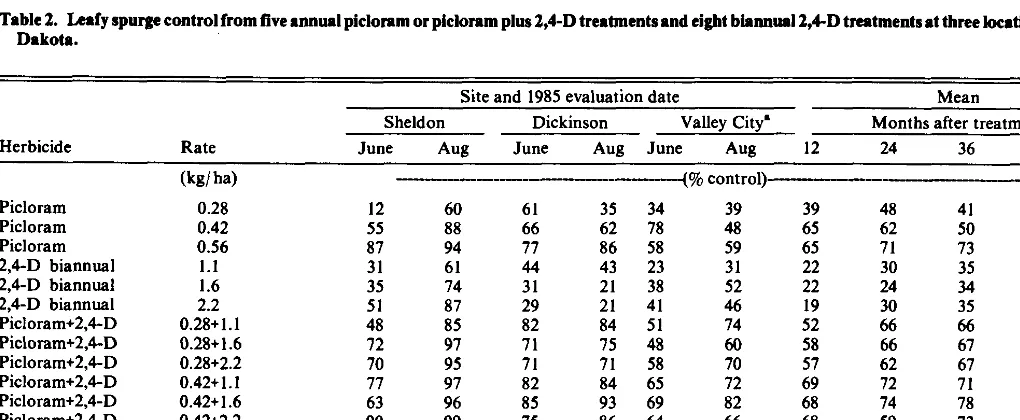Leafy spurge control and herbicide residue from annual picloram and 2,4-D application.
Full text
Figure



Related documents
To assess the level of insect utilization and implementation and the level of current and perceived future control of leafy spurge as a result of biological control agents, a
An experiment to evaluate herbicides for leafy spurge control in North Dakota in the early 1990s had to be discontinued 2 years after initiation because the western prairie
Flea beetles (Aphthona spp.) are biological control agents introduced from Eurasia to reduce the cover and density of leafy spurge (Euphorbia esula L.).. The potential for
Our objective was to determine the effect of 2 durations of moderate grazing by cattle and sheep on leafy spurge flower- ing and vegetative stem density, as well as the cover of
From the perspective of the Northern Great Plains leafy spurge control effort, social awareness of the problem has been increased among land managers; however,
A deterministic, bioeconomic model, incorporating relationships between sheep grazing and leafy spurge control, grass recovery, and forage consumption by cattle, and expected costs
Glyphosate plus 2,4-D applied annually for 3 years or rotated with dicamba (3,6-dichloro-2-methoxybenzoic acid) or picloram (4-amino-3,5,6-trichloro-2-pyridinecarboxylic acid)
Joint treatment effects of fire and bee- tles on leafy spurge stem density from 1993 to 1994 and 1993 to 1995 are com- pared in Table 4, first using all plots, and then using only